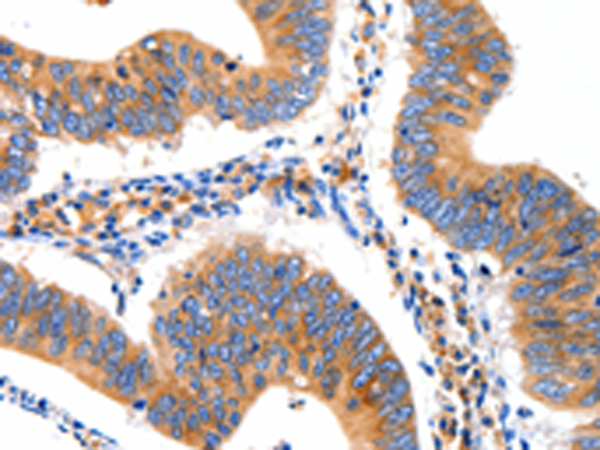中文名稱: 兔抗GRM1多克隆抗體
|
Background: |
L-glutamate is the major excitatory neurotransmitter in the central nervous system and activates both ionotropic and metabotropic glutamate receptors. Glutamatergic neurotransmission is involved in most aspects of normal brain function and can be perturbed in many neuropathologic conditions. The metabotropic glutamate receptors are a family of G protein-coupled receptors, that have been divided into 3 groups on the basis of sequence homology, putative signal transduction mechanisms, and pharmacologic properties. Group I includes GRM1 and GRM5 and these receptors have been shown to activate phospholipase C. Group II includes GRM2 and GRM3 while Group III includes GRM4, GRM6, GRM7 and GRM8. Group II and III receptors are linked to the inhibition of the cyclic AMP cascade but differ in their agonist selectivities. The canonical alpha isoform of the metabotropic glutamate receptor 1 gene is a disulfide-linked homodimer whose activity is mediated by a G-protein-coupled phosphatidylinositol-calcium second messenger system. Alternative splicing results in multiple transcript variants encoding distinct isoforms; some of which may have distinct functions. |
|
Applications: |
ELISA, IHC |
|
Name of antibody: |
GRM1 |
|
Immunogen: |
Synthetic peptide of human GRM1 |
|
Full name: |
glutamate receptor, metabotropic 1 |
|
Synonyms: |
GRM1A, mGlu1, GPRC1A, MGLUR1, SCAR13, MGLUR1A |
|
SwissProt: |
Q13255 |
|
ELISA Recommended dilution: |
1000-2000 |
|
IHC positive control: |
Human colon cancer and Human ovarian cancer |
|
IHC Recommend dilution: |
10-50 |

 購(gòu)物車
購(gòu)物車 幫助
幫助
 021-54845833/15800441009
021-54845833/15800441009
